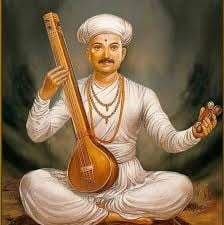History and Art and Culture
In News: The Prime Minister of India will inaugurate the Sant Tukaram Shila Mandir in the temple town of Dehu in Pune district.
- Shila refers to a rock that is currently on the Dehu Sansthan temple premises, and that for centuries has been the starting point of Wari, the annual pilgrimage to Pandharpur.
The Shila Mandir
- The Bhakti saint Sant Tukaram had sat on this piece of rock for 13 continuous days when challenged about the authenticity of the Abhyangs he had written.
- The very rock where Sant Tukaram Maharaj sat for 13 days is pious and a place of pilgrimage for the Warkari sect.


The Warkari sect
- Sant Tukaram and his work are central to the Warkari sect spread across Maharashtra.
- His message about a casteless society and his denial of rituals had led to a social movement.
- Sant Tukaram is credited with starting the Wari pilgrimage
- The Wari sees lakhs of devotees congregating in the temple towns of Dehu and Alandi to accompany the padukas of Sant Tukaram and Sant Dyaneshwar respectively as they start for Pandharpur.
- Participants finish their sowing before they set off. The pilgrims reach Pandharpur on the day of Ekadashi
Tukaram (1608-1650)
- Tukaram was born in the Indian state of Maharashtra. Tukaram Bolhoba Ambile was his full name.
- His master was Saint Chaitanya Mahaprabhu of the Bhakti movement.
- A 17th-century poet-saint who lived with Maratha ruler Shivaji Maharaj and saints such as Eknath and Ramdas.
- His poetry was dedicated to Vithoba or Vitthala, an avatar of Vishnu, the Hindu God.
- He is most known for his Marathi Abangas (dohas), which are a rich inheritance of Gatha – devotional poetry
- He emphasized community-based worship through spiritual melodies known as Kirtans. He promoted the virtues of piety, forgiveness, and inner tranquility.
- He was a vocal critic of caste and gender injustice.
- Tukaram is considered to be the pinnacle of the Bhagawat tradition, which began with Namdev.
Previous Year Questions
Q.1) With reference to culture history of India, consider the following statements: (2018)
- Most of the Tyagaraja Kritis are devotional songs in praise of Lord Krishna.
- Tyagaraja created several new ragas.
- Annamacharya and Tyagaraja are contemporaries.
- Annamacharya kirtnas are devotional songs in praise of Lord Venketshwara.
Which of the statement is given above is/are correct?
- 1 and 3 only
- 2 and 4 only
- 1, 2 and 3
- 2, 3 and 4
Source: Indian Express











